Gaze-Based Human-Computer Interaction
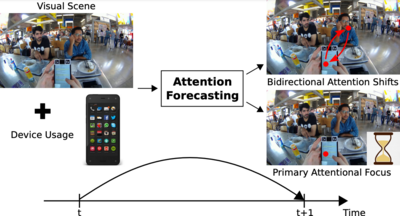
Forecasting User Attention During Everyday Mobile Interactions Using Device-Integrated and Wearable Sensors (MPIIMobileAttention)
Visual attention is highly fragmented during mobile interactions, but the erratic nature of attention shifts currently limits attentive user interfaces to adapting after the fact, i.e. after shifts have already happened. We instead study attention forecasting – the challenging task of predicting users’ gaze behaviour (overt visual attention) in the near future. We present a novel long-term dataset of everyday mobile phone interactions, continuously recorded from 20 participants engaged in common activities on a university campus over 4.5 hours each (more than 90 hours in total). We propose a proof-of-concept method that uses device-integrated sensors and body-worn cameras to encode rich information on device usage and users’ visual scene. We demonstrate that our method can forecast bidirectional attention shifts and predict whether the primary attentional focus is on the handheld mobile device. We study the impact of different feature sets on performance and discuss the significant potential but also remaining challenges of forecasting user attention during mobile interactions.
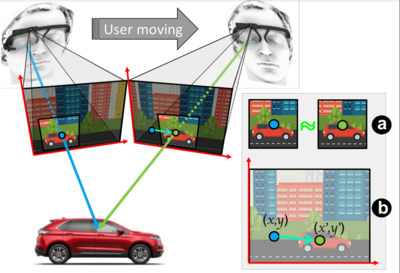
Fixation Detection for Head-Mounted Eye Tracking Based on Visual Similarity of Gaze Targets (MPIIEgoFixation)
Fixations are widely analysed in human vision, gaze-based interaction, and experimental psychology research. However, robust fixation detection in mobile settings is profoundly challenging given the prevalence of user and gaze target motion. These movements feign a shift in gaze estimates in the frame of reference defined by the eye tracker's scene camera. To address this challenge, we present a novel fixation detection method for head-mounted eye trackers. Our method exploits that, independent of user or gaze target motion, target appearance remains about the same during a fixation. It extracts image information from small regions around the current gaze position and analyses the appearance similarity of these gaze patches across video frames to detect fixations. We evaluate our method using fine-grained fixation annotations on a five-participant indoor dataset (MPIIEgoFixation) with more than 2,300 fixations in total. Our method outperforms commonly used velocity- and dispersion-based algorithms, which highlights its significant potential to analyse scene image information for eye movement detection.
InvisibleEye: Mobile Eye Tracking Using Multiple Low-Resolution Cameras and Learning-Based Gaze Estimation (InvisibleEye)
Analysis of everyday human gaze behaviour has signi cant potential for ubiquitous computing, as evidenced by a large body of work in gaze-based human-computer interaction, attentive user interfaces, and eye-based user modelling. However, current mobile eye trackers are still obtrusive, which not only makes them uncomfortable to wear and socially unacceptable in daily life, but also prevents them from being widely adopted in the social and behavioural sciences. To address these challenges we present InvisibleEye, a novel approach for mobile eye tracking that uses millimetre-size RGB cameras that can be fully embedded into normal glasses frames. To compensate for the cameras’ low image resolution of only a few pixels, our approach uses multiple cameras to capture di erent views of the eye, as well as learning-based gaze estimation to directly regress from eye images to gaze directions. We prototypically implement our system and characterise its performance on three large-scale, increasingly realistic, and thus challenging datasets: 1) eye images synthesised using a recent computer graphics eye region model, 2) real eye images recorded of 17 participants under controlled lighting, and 3) eye images recorded of four participants over the course of four recording sessions in a mobile setting. We show that InvisibleEye achieves a top person-speci c gaze estimation accuracy of 1.79° using four cameras with a resolution of only 5 × 5 pixels. Our evaluations not only demonstrate the feasibility of this novel approach but, more importantly, underline its signi cant potential for nally realising the vision of invisible mobile eye tracking and pervasive attentive user interfaces.
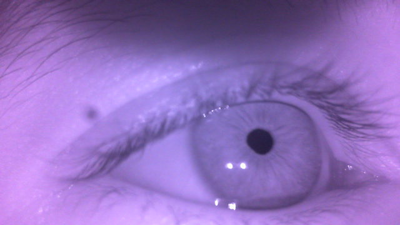

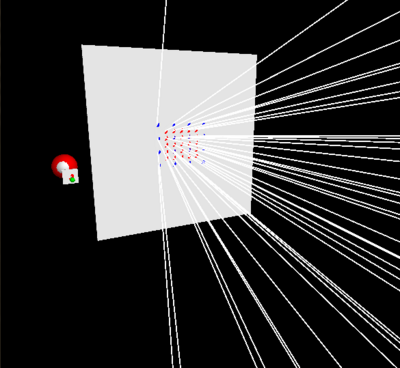
3D Gaze Estimation from 2D Pupil Positions on Monocular Head-Mounted Eye Trackers
3D gaze information is important for scene-centric attention analysis, but accurate estimation and analysis of 3D gaze in real-world environments remains challenging. We present a novel 3D gaze estimation method for monocular head-mounted eye trackers. In contrast to previous work, our method does not aim to infer 3D eyeball poses, but directly maps 2D pupil positions to 3D gaze directions in scene camera coordinate space. We first provide a detailed discussion of the 3D gaze estimation task and summarize different methods, including our own. We then evaluate the performance of different 3D gaze estimation approaches using both simulated and real data. Through experimental validation, we demonstrate the effectiveness of our method in reducing parallax error, and we identify research challenges for the design of 3D calibration procedures.
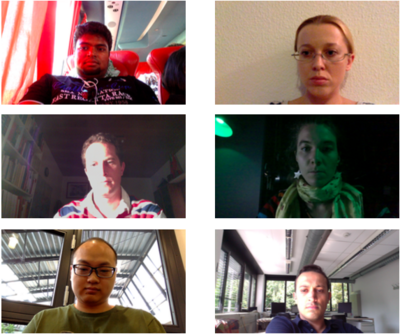
Appearance-Based Gaze Estimation in the Wild (MPIIGaze)
Appearance-based gaze estimation is believed to work well in real-world settings, but existing datasets have been collected under controlled laboratory conditions and methods have been not evaluated across multiple datasets. In this work we study appearance-based gaze estimation in the wild. We present the MPIIGaze dataset that contains 213,659 images we collected from 15 participants during natural everyday laptop use over more than three months. Our dataset is significantly more variable than existing ones with respect to appearance and illumination. We also present a method for in-the-wild appearance-based gaze estimation using multimodal convolutional neural networks that significantly outperforms state-of-the art methods in the most challenging cross-dataset evaluation. We present an extensive evaluation of several state-of-the-art image-based gaze estimation algorithms on three current datasets, including our own. This evaluation provides clear insights and allows us to identify key research challenges of gaze estimation in the wild.
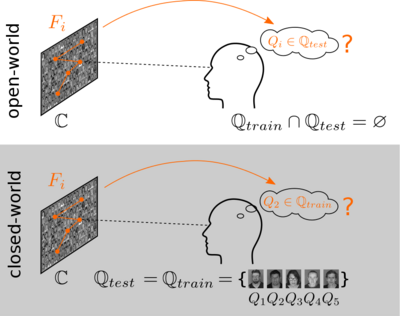
Prediction of Search Targets From Fixations in Open-World Settings
Previous work on predicting the target of visual search from human fixations only considered closed-world settings in which training labels are available and predictions are performed for a known set of potential targets. In this work we go beyond the state of the art by studying search target prediction in an open-world setting in which we no longer assume that we have fixation data to train for the search targets. We present a dataset containing fixation data of 18 users searching for natural images from three image categories within synthesised image collages of about 80 images. In a closed-world baseline experiment we show that we can predict the correct target image out of a candidate set of five images. We then present a new problem formulation for search target prediction in the open-world setting that is based on learning compatibilities between fixations and potential targets.

Deep Gaze Pooling: Inferring and Reconstructing Search Intent From Human Fixations
Predicting the target of visual search from eye fixation (gaze) data is a challenging problem with many applications in human-computer interaction. In contrast to previous work that has focused on individual instances as a search target, we propose the first approach to predict categories and attributes of search targets based on gaze data and to even visualize a plausible search target. However, state-of-the-art models for categorical recognition, in general, require large amounts of training data, which is prohibitive for gaze data. To address this challenge, we further propose a novel Gaze Pooling Layer that combines gaze information with visual representations from Deep Learning approaches. Our scheme incorporates both spatial and temporal aspects of human gaze behavior as well as the appearance of the fixated locations. We propose an experimental setup and data set and demonstrate the effectiveness of our method for search target prediction and visualization based on gaze behavior. We highlight several practical advantages of our approach, such as compatibility with existing architectures, no need for gaze training data, and robustness to noise from typical gaze sources.
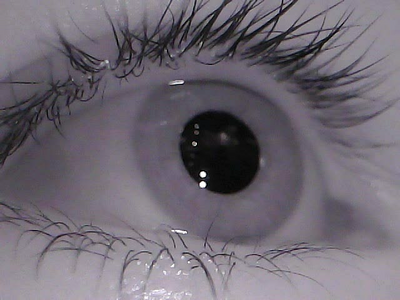

Labelled Pupils in the Wild (LPW)
We present labelled pupils in the wild (LPW), a novel dataset of 66 high-quality, high-speed eye region videos for the development and evaluation of pupil detection algorithms. The videos in our dataset were recorded from 22 participants in everyday locations at about 95 FPS using a state-of-the-art dark-pupil head-mounted eye tracker. They cover people with different ethnicities, a diverse set of everyday indoor and outdoor illumination environments, as well as natural gaze direction distributions. The dataset also includes participants wearing glasses, contact lenses, as well as make-up. We benchmark five state-of-the-art pupil detection algorithms on our dataset with respect to robustness and accuracy. We further study the influence of image resolution, vision aids, as well as recording location (indoor, outdoor) on pupil detection performance. Our evaluations provide valuable insights into the general pupil detection problem and allow us to identify key challenges for robust pupil detection on head-mounted eye trackers.
